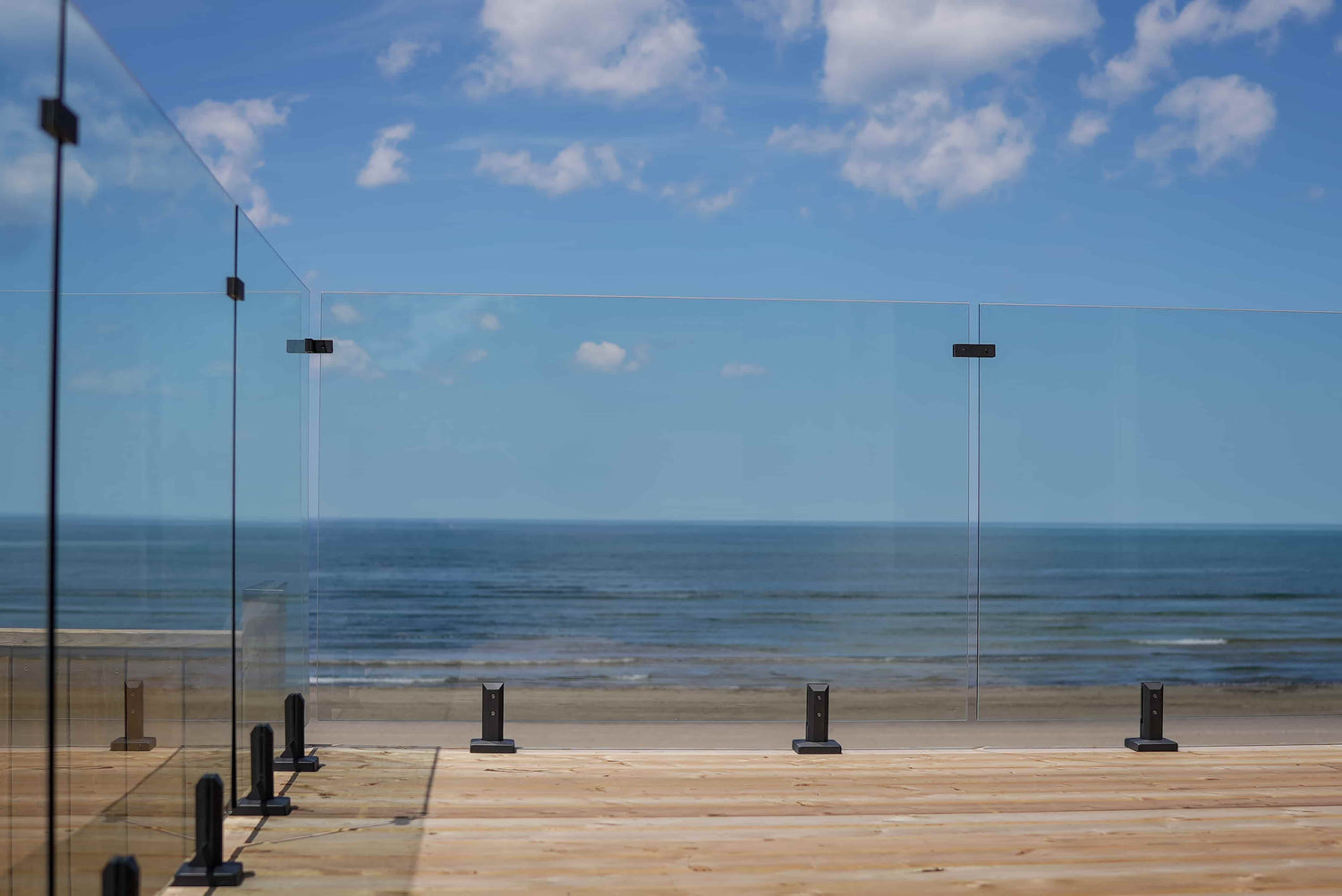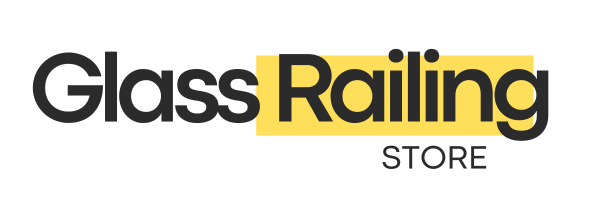Kansas Building Code for Glass Railing

The Kansas Building Code governs the creation and deployment of glass railing Systems. It defines railing height and glass panel specifications by building safety compliance guidelines.
Furthermore, the state safety regulations for framed and frameless glass railings also cover pool fencing requirements. To learn more, read this article to the very end.
What is the Kansas Building Code

The Kansas Building Code is the benchmark for construction and renovation work. It is based on the 2018 International Building Code (IBC), which was adopted on August 1, 2018.
It covers occupancy classification, building specifications, structural details, and more. State-wide enforcement of this code is only mandatory on state-owned property.
Local jurisdictions can adopt their version of the building code based on the state code or IBC. Nonetheless, most jurisdictions adopt some version of the Kansas Building Code for construction, renovation, and installations.
As such, this code is also applied to glass railing design and installation.
Functions of Frameless Glass Railings

Frameless glass railings are known for offering sleek and aesthetically pleasing supporting structures that beautify indoor and outdoor spaces. These glass railing systems provide similar protection and support as conventional guardrails for users in residential, commercial, and public locations.
Railings are used in elevated platforms, including terraces, balconies, mezzanines, ramps, stairways, decks, and more. When properly installed, frameless glass railings offer an unobstructed view of the beautiful skyline and coast, depending on location.
Many buildings and apartment owners opt for these glass guardrails because they appear luxurious and affluent. However, as highlighted in the Kansas Building Code, frameless glass railings must adhere to the standard safety regulations below.
- Elevated platforms like decks, patios, and stairways must have glass railings if elevated more than 762 mm (30 inches).
- A minimum opening of 100 mm (4 inches) is allowed for traditional and glass railing systems.
Guardrails used as glass deck railings or similar structures must adhere to these building safety compliance guidelines in most local jurisdictions.
Glass Guardrail Specifications

Although local jurisdictions across the state can adopt their preferred building code, most localities use the Kansas Building Code. Therefore, glass railing design and installation are broadly based on state safety regulations.
In particular, railing height and glass panel specifications are critical parameters for the safe deployment of guard railings. Special attention is also given to pool enclosures with traditional or glass railings.
Frameless Glass Guardrail Height
The height of guardrails is critical for the safety of users, especially children. This parameter ensures user safety by reducing the likelihood of falling while using elevated platforms.
Frameless glass railings used in public, commercial, and residential locations are governed by these height specifications.
- Individual dwelling buildings and similar occupancies that are not more than three stories are allowed to have glass railings with a minimum height of 864 mm (34 inches) for stairways and 914 mm (36 inches) for other platforms.
- However, the standard for all other building types is to have frameless glass railings with a height of at least 1067 mm (42 inches).
Despite the flexibility, most building owners prefer using the height of 1067 mm (42 inches) as a minimum for all frameless glass railings.
To remain compliant with future building codes, homeowners and contractors are advised to use frameless glass railings that are 1067 mm (42 inches).
Guardrail Glass Details
The glass type determines the stability of frameless railings. Therefore, the Kansas Building Code specifies strict regulations for user safety.
Some of the more crucial safety regulations include the following.
- Heat-strengthened or fully tempered frameless glazing is required for indoor and outdoor guard rails.
- However, single-tempered glass panels can be used if the elevated platform is not situated in a location where falling glass can harm people.
- All glass panels used for guardrails must comply with Class A of ANSI Z97.1 or Category II of CPSC 16 CFR Part 1201 standard.
- Glazing with cracks, dents, and other visible defects is not used for railings.
- Frameless glass railings require glass panels that are at least 12 mm (0.5 inches) thick.
Pool Frameless Glass Railings
The Kansas Building Code has special safety regulations for frameless glass railings used as pool enclosures. Although each jurisdiction is free to adopt its pool fencing requirements, most localities stick to the general safety principles that prevent access to pool areas by unsupervised children and unauthorized adults.
Some of the essential pool enclosure glass railing requirements are highlighted below.
- If a water body is higher than 610 mm (24 inches), it must have an enclosure.
- Railing height varies for pool enclosures across municipalities. In general, a minimum and maximum height of 1067 mm (42 inches) and 1524 mm (60 inches) are used for frameless glass pool railings, respectively.
- Glass panel thickness needs to be at least 12 mm (0.5 inches) for higher pool enclosures.
- Like other guardrails, glass pool fencing should not allow openings wider than 100 mm (4 inches).
- Self-closing and self-latching mechanics should be attached to gates leading into pool enclosures.
Benefits of Frameless Glass Railing

Frameless glass railing systems offer home and office owners various benefits, which include the following:
- Frameless glass railings provide a transparent barrier, which offers a seamless and uninterrupted view of the surroundings from patios, decks, balconies, and similar platforms.
- It blends perfectly with contemporary architecture, allowing for a minimalist, elegant, and open appearance.
- This glass railing system is perfect for indoor and outdoor use.
- It is safe when properly installed and built with tempered or laminated glazing, conforming with building code safety regulations.
- When properly installed, frameless guardrails admit more illumination into the building, limiting the need for artificial light during the daytime.
- Frameless glass railings built with high-quality glass railing hardware are corrosion-resistant. In addition, using the right material requires less maintenance.
- It is easy to customize using LED lighting, tints, and frosted coating.
Conclusion
The Kansas Building Code defines construction and renovation, including glass railing design and installation. It is based on the 2018 IBC, which was adopted in the same year.
Since then, this code has been the safety regulation standard. Yet, local jurisdictions can adopt this building code or another version of the IBC.
Like other safety regulations, this building code covers several building safety compliance guidelines, including guardrail height and glass panel specifications. It also covers frameless glass railing pool enclosure details.
Finally, learning about the Kansas Building Code for glass railings highlights the benefits of the frameless guardrails.
FAQs for Kansas Building Code for Glass Railing
Is it mandatory to have tempered glass?
Tempered glass is highly recommended for frameless glass railing, which can be full or single. In addition, heat-strengthened laminated glazing can be used, preventing glass from shattering after breakage.
What is the best thickness for glass railing?
The thickness of a standard glass panel starts at 6 mm (0.2 inches) for framed railings. However, frameless glass railings require a thickness of 12 mm (0.5 inches).
What is the minimum height for a glass railing?
The minimum height of glass railings starts at 864 mm (34 inches) for stairways in individual dwelling units. However, the standard height for frameless glass railings is at least 1067 mm (42 inches).
Let customers speak for us

Glass Railing Near You
Discover how The Glass Railing Store has been delivering exceptional service to our customers, thanks to our dedicated and knowledgeable team and their love our glass railing products.







